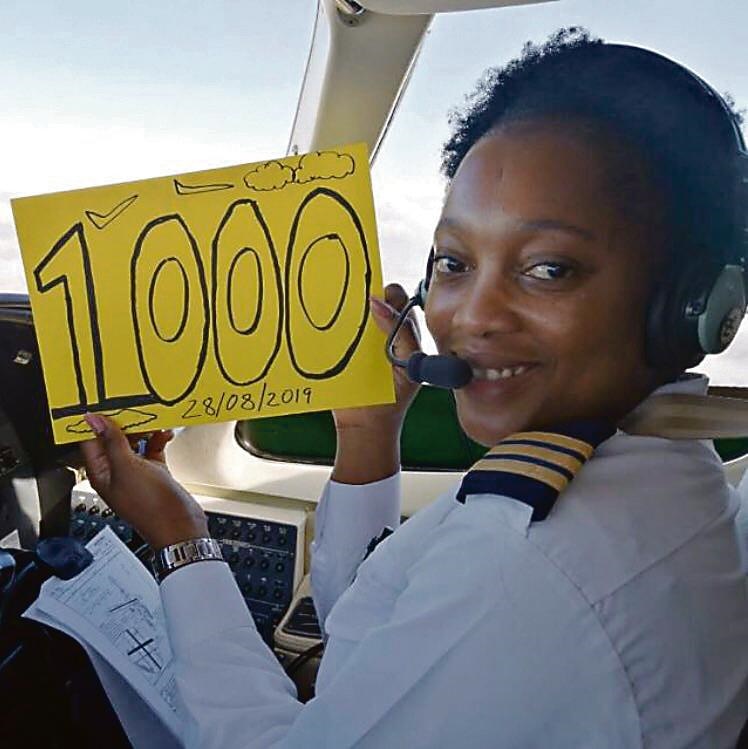News24.com | Crashed plane was supposed to be replaced in 2018. Did aviation authority drop the ball?


May the souls of Captain Thabiso Tolo, First Officer Tebogo Lekalakala and flight inspector Gugu Comfort Mnguni, the South African Civil Aviation Authority officials who perished in a plane crash on January 23 rest in eternal peace.
I can only imagine the anguish that you, the friends and families of Captain Tolo, Lekalakala and Mnguni are going through.
Your wounds are raw, fresh and suppurating.
You are enraged, bewildered and desperate for answers.
You want to know: was it an accident?
Could it have been prevented? Was there negligence from the pilot or the CAA?
Was the aircraft properly maintained? What was going on in the minds of the three officials when they realised that they are going down?
Some of these questions will be answered by the investigation into what led to the crash. Or so I hope.
Read: Aviation authority ‘can’t investigate itself’
Transport Minister Fikile Mbalula and the CAA’s chief executive Poppy Khoza have probably attempted to assure you that they will get to the bottom of what happened.
It is all little comfort though, as whatever the outcome of the probe, Captain Tolo, Lekalakala and Mnguni are dead.
But as you seek answers, I want to tell you things that Mbalula and Khoza will probably not have the courage to tell you.
I want to tell you that the calibration aircraft that killed Captain Tolo, Lekalakala and Mnguni should have been replaced in 2018 sometime.
I hope Mbalula and Khoza have told you this.
I hope Mbalula and Khoza have told you that in 2018 the CAA advertised a tender to have the crashed aircraft replaced.
By they way, that aircraft had been flying since 1986.
Three companies submitted bids but the CAA withdrew the tender on the last minute.
I asked the CAA for the reasons why that tender was withdrawn.
The organisation’s spokesperson Pappie Maja told me the tender was withdrawn because “the bidders’ submissions did not meet the minimum tender specifications”.
Sometime last year the CAA advertised another tender for the replacement of the calibration aircraft.
The organisation withdrew the tender for the second time.
I asked Maja why the tender was withdrawn for the second time and again he told me that “the bidders for the first two tenders did not meet the minimum requirements of the specifications”.
In November last year the CAA advertised a third tender, whose validity expires this week.
Officials will probably extend the tender’s validity. Whether or not the tender will be awarded this time around is anyone’s guess.
A source close to the CAA told me that the organisation’s Flight Inspection Unit (FIU) had declared the aircraft unfit to fly, at least twice in recent years.
But a bright spark in the CAA vetoed the decision and gave it a clean bill of health.
Your departed loved ones may have told you that in November last year the 12-seater Cessna had to abort a takeoff from Lanseria after smoke started billowing from the cockpit.
Another source with knowledge of the aviation industry told me that there was actually fire in one of the engines.
But Maja disputed this, saying it was just a “smoke incident”.
“The smoke incident was reported to the Aircraft Accident and Investigation Division (AIID) during the month of November 2019. That investigation is still ongoing, however, a preliminary report was issued in December 2019. The SACAA (South African Civil Aviation Authority) aircraft was maintained by an accredited Aircraft Maintenance Organisation (AMO). The AMO conducted its own assessment relating to the cause of the smoke and discovered that there was an oil leakage in one of the engines. The engine was replaced before the aircraft was released to service.”
There are also allegations that the tender was withdrawn twice because the bidder that officials wanted had not made the cut.
These are just untested allegations that will be close to impossible to prove.
But the allegations should be investigated. This is because the likelihood that all bidders failed to meet the specifications twice are quite remote.
In the event that bidders simply didn’t meet critical specifications, Khoza could have requested Treasury to procure the calibration aircraft through a deviation.
But on balance, it appears that the CAA, Africa’s premier civil aviation authority, dropped the ball.
Had the CAA replaced the crashed aircraft in 2018, Captain Tolo, Lekalakala and Mnguni may not have died.
If there was gross negligence on the part of the CAA, Khoza and her executive should be charged with manslaughter.
Let us hope that the CAA’s incompetence does not lead to the crash of an airbus.
The last time that South Africa had a fatal air crash was in 1987 when a SAA aircraft crashed, killing all 159 passengers on board.
I hope Mbalula will appoint an independent body to investigate the CAA’s crash.
In the normal course of business, the CAA investigates all aircraft crashes in the country.
But since the CAA is involved in this particular case, it would be inappropriate for the organisation to conduct the investigation.
Mbalula’s spokesperson Ayanda Allie-Paine said the crash was unfortunate.
“As South African law requires, an investigation has to be undertaken by the competent authority. The law adjoins the South African Civil Aviation Authority to investigate all accidents and that a preliminary report be issued within 30 days of the accident having taken place. The minister has impressed upon SACAA to comply with the law. Beyond this, the minister has directed that an independent inquiry be undertaken seeing that the aircraft belonged to SACAA and in order to be compliant with the legal principle of nemo iudex in re sua causa (no person can judge a case in which they have an interest).”
 |
|